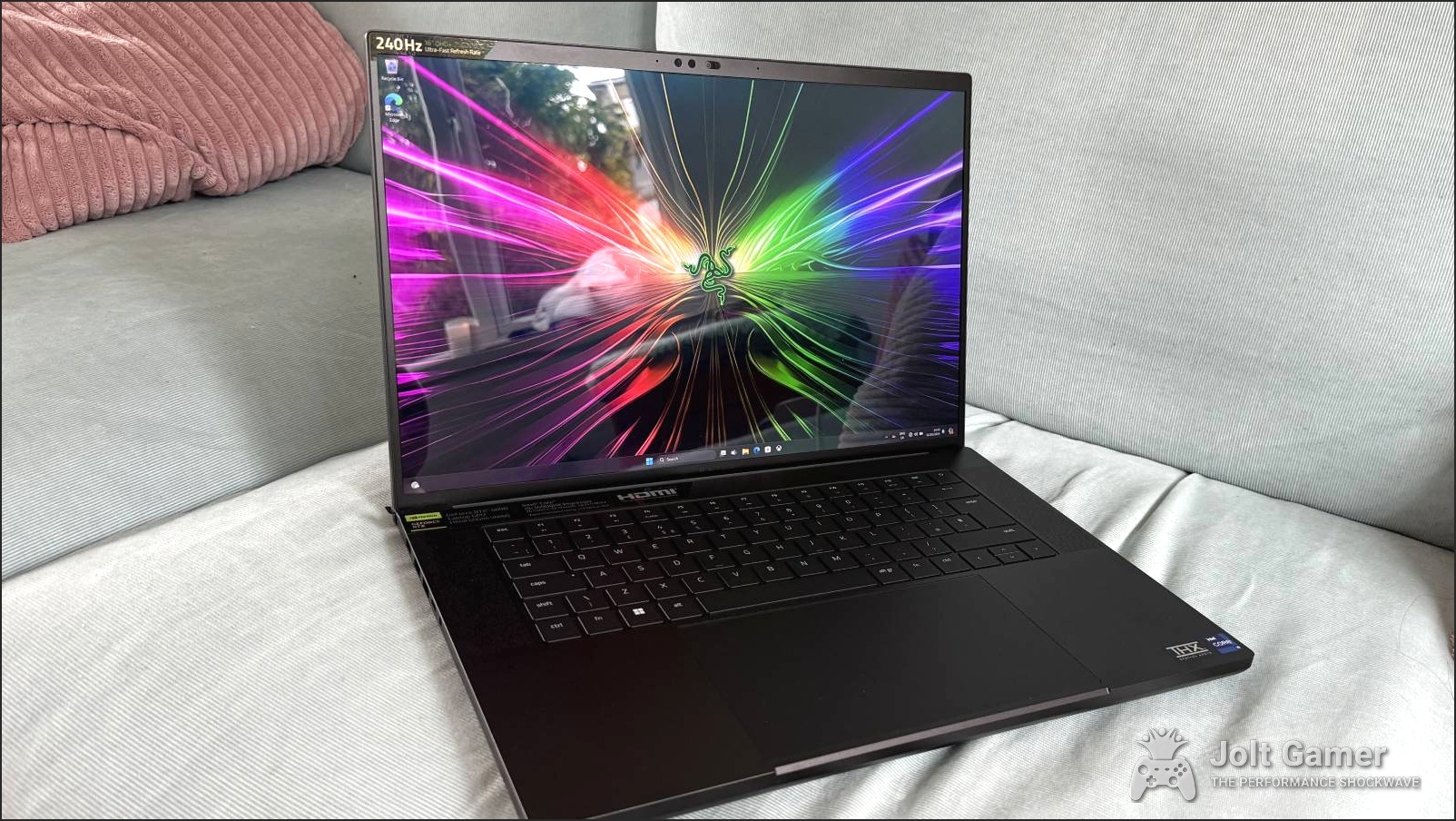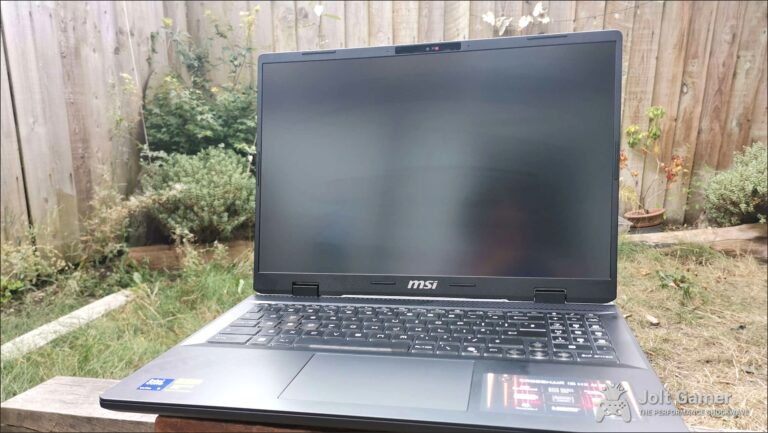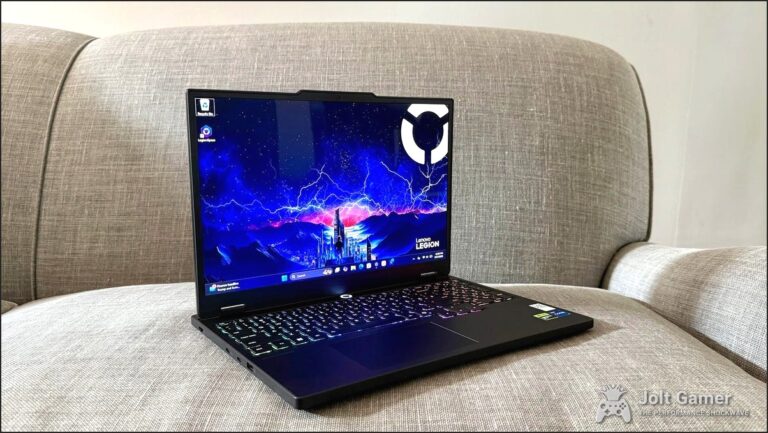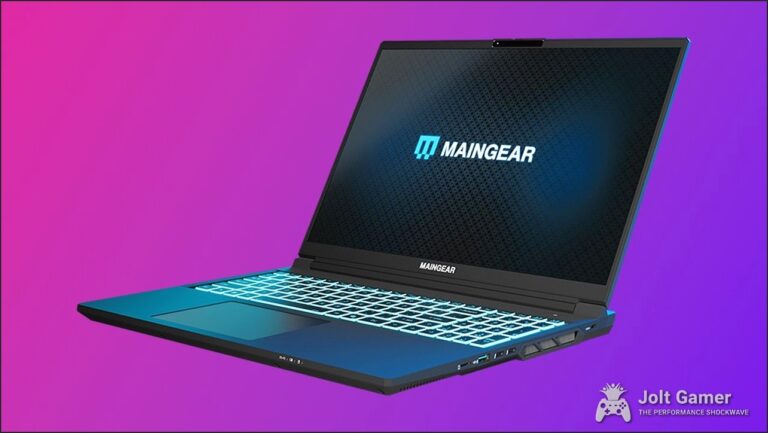Introduction: The Razer Blade 16 – A Legacy Reimagined
For years, the Razer Blade series has stood as a beacon of premium gaming and creative power, consistently pushing the boundaries of what’s possible in a sleek, portable form factor. The 16-inch variant, in particular, has seen rapid evolution, culminating in the highly anticipated 2025 model. This definitive guide cuts through the marketing hype to provide an exhaustive, generation-by-generation analysis of the Razer Blade 16, from its 2023 inception to the groundbreaking 2025 refresh. We’ll explore the critical shifts in design, performance, and thermal management, dissect the community’s burning questions around price and battery life, and help you understand which Blade 16—if any—is the right investment for your high-performance needs.
Key Takeaways
- The Razer Blade 16 has undergone significant evolution across its 2023, 2024, and 2025 models, focusing on balancing power and portability.
- The 2025 model marks a pivotal shift to AMD Ryzen AI processors and NVIDIA RTX 50-series GPUs, introducing AI PC capabilities and a dramatically thinner chassis.
- Key improvements include enhanced thermal management, upgraded keyboards, and consistently stunning OLED displays.
- Community concerns persist around the premium price point, battery life, and the trade-offs between raw performance and ultra-portability.
- This guide provides a detailed comparison of each generation, helping identify the ideal Razer Blade 16 for different user profiles.
The Razer Blade 16 Lineage: Engineering Elegance Meets Raw Power
Razer’s entry into the laptop market in 2011 was met with skepticism, but the brand quickly carved out a niche by prioritizing a distinct design language and manufacturing innovation. Unlike many competitors, Razer committed to crafting its laptops from single blocks of aluminum, a method that, combined with pioneering vapor chamber cooling, allowed them to pack immense power into increasingly thin and aesthetically pleasing chassis. The Blade 16 embodies this philosophy, aiming to be a desktop replacement that doesn’t sacrifice mobility or style. Each iteration strives to push the envelope, integrating the latest silicon from Intel, AMD, and NVIDIA while refining the user experience.
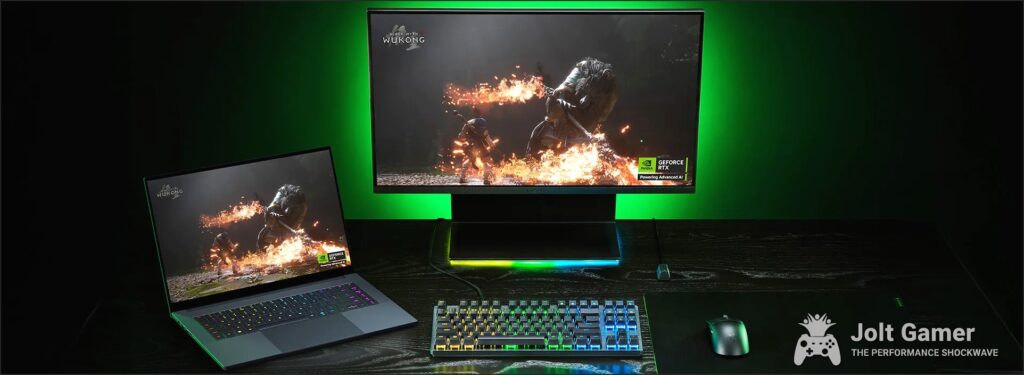
Razer Blade 16 (2025): The AI-Powered, Ultra-Thin Future
Unveiled at CES 2025, the Razer Blade 16 (2025) represents a monumental refresh, breaking from tradition with a pivotal shift to AMD processors. This model is not just thinner and lighter; it’s Razer’s first true AI PC, designed from the ground up to leverage the power of integrated Neural Processing Units (NPUs) and the latest NVIDIA RTX 50-series GPUs. It aims to deliver a blend of cutting-edge performance, superior efficiency, and enhanced portability previously unseen in the Blade line.
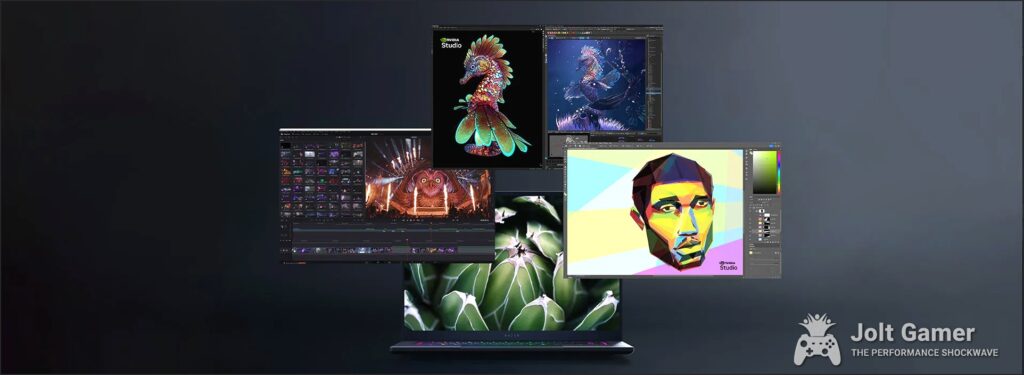

Razer Blade 16 (2025) Key Specifications
| Processor | Up to AMD Ryzen AI 9 HX 370 (12 Cores / 24 Threads, 5.1 GHz, 50 TOPS NPU) |
|---|---|
| Graphics | Up to NVIDIA® GeForce RTX™ 5090 Laptop GPU (24 GB GDDR7 VRAM, up to 155W TGP, 175W with HyperBoost) |
| Memory | Up to 64 GB LPDDR5X-8000MHz (soldered) |
| Storage | Up to 8 TB (2x m.2 slots, each up to 4 TB single-sided SSD) |
| Display | 16-inch QHD+ (2560 x 1600) 240 Hz OLED, 0.2ms response, 500 nits, Calman Verified, G-Sync |
| Chassis | CNC Milled Aluminum, 0.59 inches (15mm) thin, 4.6 lbs (2.1kg) |
| Cooling | Redesigned Vapor Chamber, Thermal Hood, Ultra-thin 0.05mm fins, Honeywell PTM7958 Thermal Gel |
| Keyboard | Upgraded with 1.5mm key travel, per-key RGB, Copilot key |
| Audio | Upgraded 6-speaker system with THX Spatial Audio |
| Connectivity | Wi-Fi 7, BT 5.4, 2x USB4 Type-C (100W PD), 3x USB 3.2 Gen 2 Type-A, HDMI 2.1, UHS-II SD Card Reader, 3.5mm Combo Audio |
| Battery | 90 Whr (approx. 8 hrs web browsing, 1.5 hrs gaming) |
| OS | Windows 11 Home (Copilot+ PC) |
Razer Blade 16 (2025) – The Verdict
Pros
- Thinnest Blade Ever: Significantly reduced chassis thickness (0.59 inches) enhances portability, making it comparable to a MacBook Pro in slimness while packing far more power.
- AMD Ryzen AI Power: The strategic shift to AMD offers superior efficiency, leading to cooler operation and better battery life, alongside an integrated NPU for accelerated AI workloads and Copilot+ PC capabilities.
- RTX 5090 GPU: With 24GB GDDR7 VRAM and up to 175W TGP, this GPU delivers cutting-edge graphics for gaming at QHD+ resolutions and complex creative tasks, especially leveraging DLSS 4 and Frame Generation for exceptional fluidity.
- Stunning OLED Display: The QHD+ 240Hz OLED panel, with its 0.2ms response time and infinite contrast, remains a class leader, offering vibrant colors and deep blacks crucial for both gaming and professional content creation.
- Improved Keyboard & Audio: Enhanced key travel (1.5mm) provides a more satisfying typing experience, while the upgraded 6-speaker system with THX Spatial Audio delivers clearer, more impactful sound than previous generations.
- Robust Connectivity: Wi-Fi 7, BT 5.4, two USB4 Type-C ports, and a comprehensive selection of other ports ensure future-proofing and broad compatibility for peripherals and external displays.
Cons
- Soldered RAM: The LPDDR5X memory is soldered, preventing user upgrades after purchase. While 64GB is substantial, it’s a potential limitation for power users who prefer future-proofing through expansion.
- Premium Price Tag: Starting around $3,000 and climbing to nearly $5,000, the Blade 16 remains one of the most expensive gaming laptops on the market, placing it firmly in the aspirational category for most users.
- USB4 vs. Thunderbolt: The transition to an AMD platform means the loss of Thunderbolt 4. While USB4 offers similar bandwidth, it may affect compatibility with specific Thunderbolt-only professional workflows and docks.
- Performance Trade-off for Thinness: The RTX 5090’s TGP is capped at 160W (vs. its 175W maximum with an external cooler) to maintain the slim profile, slightly impacting peak performance compared to larger, less portable machines.
- Fan Noise Under Load: Despite significant thermal improvements, the fans are still noticeable and can become loud during intense gaming sessions, a common trade-off for cramming high-power components into a thin chassis.
Razer Blade 16 (2025) Gaming Performance Highlights (RTX 5090)
AI PC & Copilot+ Ready
The 2025 Blade 16 is Razer’s first official AI PC, leveraging the AMD Ryzen AI 9 HX 370’s integrated NPU (50 TOPS) and NVIDIA’s updated Tensor Cores. This enables efficient on-device AI workloads, from rapid image generation to enhanced creative applications, marking a significant leap into the future of computing. Expect seamless integration with Windows Copilot+ features, making the laptop not just a gaming powerhouse, but a true intelligent workstation.
Razer Blade 16 (2024): The Intel-Powered Performance King
The 2024 Razer Blade 16, while visually similar to its predecessor, packed a serious punch with Intel’s 14th Gen Core i9-14900HX processor and NVIDIA’s RTX 40-series GPUs (up to RTX 4090). It was particularly lauded for its groundbreaking display options, including the world’s first dual-mode Mini-LED panel, offering unparalleled versatility for both high-refresh-rate gaming and high-resolution creative work. This model solidified the Blade 16’s reputation as a top-tier desktop replacement, prioritizing raw power and cutting-edge display technology.
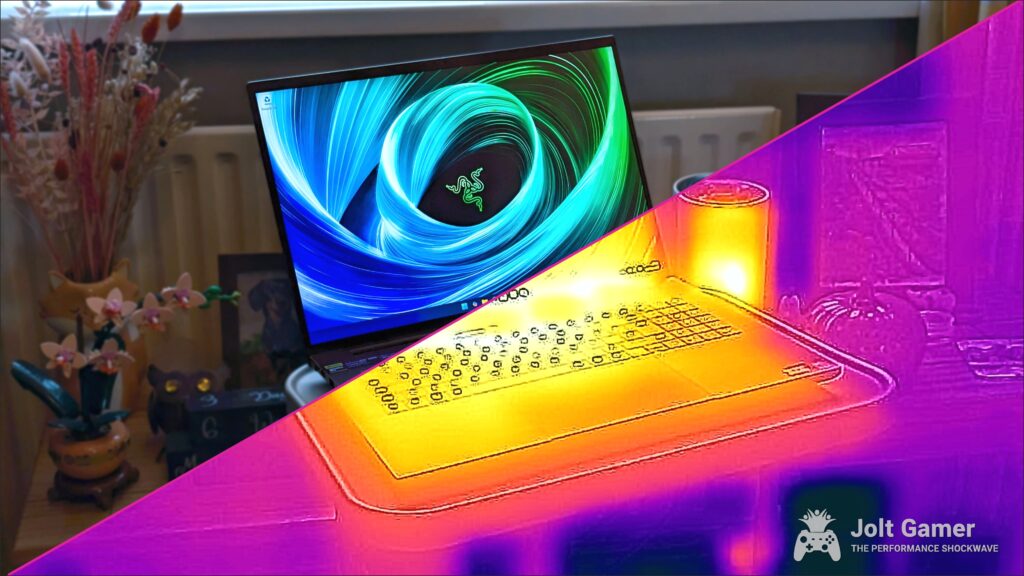
Razer Blade 16 (2024) Key Specifications
| Processor | Intel® Core™ i9-14900HX (24 Cores / 32 Threads, up to 5.8 GHz) |
|---|---|
| Graphics | Up to NVIDIA® GeForce RTX™ 4090 Laptop GPU (16 GB GDDR6 VRAM, up to 175W TGP) |
| Memory | Up to 64 GB DDR5-5600MHz (upgradeable to 96GB) |
| Storage | Up to 4 TB (2x PCIe® 4.0 NVMe™ M.2 SSD slots) |
| Display Options | 16-inch QHD+ (2560×1600) 240Hz OLED OR Dual-Mode Mini-LED (UHD+ 120Hz / FHD+ 240Hz) |
| Chassis | CNC Milled Aluminum, 0.87 inches (22mm) thick, 5.4 lbs (2.45kg) |
| Cooling | Vapor Chamber Cooling |
| Keyboard | Per-key RGB backlit with N-Key rollover |
| Audio | 4-speaker array with THX® Spatial Audio |
| Connectivity | Wi-Fi 6E AX211 (Optional Wi-Fi 7), BT 5.3 (Optional BT 5.4), 1x Thunderbolt™ 4 (USB-C), 1x USB 3.2 Gen 2 Type-C, 3x USB 3.2 Gen 2 Type-A, HDMI 2.1, UHS-II SD Card Reader, 3.5mm Combo Audio |
| Battery | 95.2 Whr (approx. 6 hrs light use, 1.5 hrs gaming) |
| OS | Windows 11 Home |
Razer Blade 16 (2024) – The Verdict
Pros
- Exceptional CPU Performance: The Intel Core i9-14900HX offered leading multi-core and single-core performance, making it a formidable choice for demanding applications and gaming.
- Versatile Display Options: The dual-mode Mini-LED and QHD+ OLED panels provided excellent visual fidelity, deep blacks, and high refresh rates, catering to both gamers and creative professionals.
- High TGP RTX 4090: With up to 175W TGP, the RTX 4090 delivered bleeding-edge gaming performance for its generation, consistently pushing high frame rates in demanding titles.
- User-Upgradeability: Unlike the 2025 model, both RAM and storage were easily user-upgradeable, offering significant flexibility for future expansion up to 96GB DDR5 RAM and 8TB SSD storage.
- Premium Build Quality: It retained the signature CNC aluminum chassis and sleek design, offering a robust and aesthetically pleasing package that felt premium to the touch.
Cons
- Significant Heat Output: The all-metal chassis, while premium, became notably hot during intensive gaming, often reaching 90°C, necessitating loud fans for adequate cooling.
- Subpar Battery Life: With only around 6 hours for light use and a mere 1.5 hours for gaming, its battery endurance was a major limitation, making it less ideal for unplugged, on-the-go productivity.
- Less Portable: At 0.87 inches thick and 5.4 lbs, it was noticeably thicker and heavier than the 2025 model, solidifying its role more as a desktop replacement than a truly mobile companion.
- Fingerprint Magnet: The dark anodized finish, while elegant, was highly prone to attracting fingerprints and smudges, requiring frequent cleaning to maintain its pristine look.
- High Price: With top configurations exceeding $4,000, it was an extremely expensive laptop, positioning it as a luxury item for enthusiasts willing to pay a “pretty penny” for peak performance.
2 hour battery life just can’t be justified however good this is. The world has changed, manufacturers have to work so much harder at efficiency
Fandom Pulse, User Comment
Razer Blade 16 (2024) Gaming Performance Highlights (RTX 4090)
Razer Blade 16 (2023): The Debut of a New Form Factor
The 2023 Razer Blade 16 marked the introduction of the 16-inch form factor, offering a balance between the smaller 14-inch and larger 18-inch models. It was designed to deliver superior graphics power per cubic inch, featuring 13th Gen Intel Core i9 processors and up to NVIDIA RTX 4090 GPUs. This model laid the groundwork for the subsequent refinements, establishing the core design principles and performance expectations for the series, including patented vapor chamber cooling and a focus on premium aesthetics.
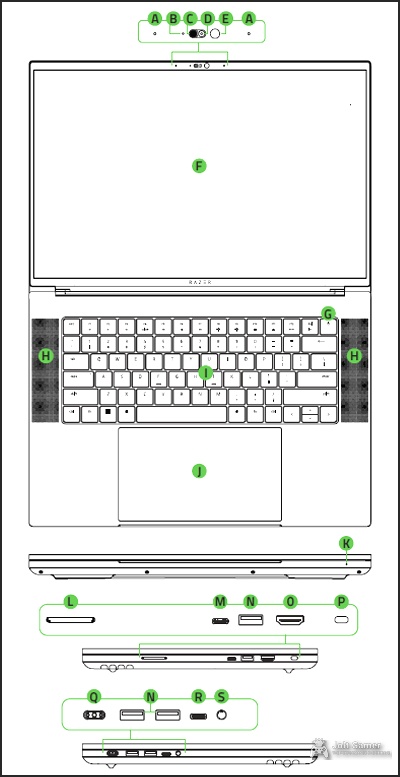
Razer Blade 16 (2023) Key Specifications
| Processor | Intel® Core™ i9-13950HX (24 Cores / 32 Threads, up to 5.5 GHz) |
|---|---|
| Graphics | Up to NVIDIA® GeForce RTX™ 4090 Laptop GPU (Up to 175W TGP) |
| Memory | Up to 32 GB DDR5-5600MHz (upgradeable to 64GB) |
| Storage | Up to 4 TB (2x PCIe® 4.0 NVMe™ M.2 SSD slots) |
| Display | 16-inch QHD+ (2560×1600) 240Hz IPS-Grade or Dual-Mode Mini-LED (UHD+ 120Hz / FHD+ 240Hz) |
| Chassis | CNC Milled Aluminum, 0.87 inches (22mm) thick, 5.4 lbs (2.45kg) |
| Cooling | Patented Vapor Chamber Cooling |
| Keyboard | Per-key RGB backlit Razer Chroma™ |
| Audio | 4-speaker array with THX® Spatial Audio |
| Connectivity | Wi-Fi 6E AX211, BT 5.3, 1x Thunderbolt™ 4 (USB-C), 1x USB 3.2 Gen 2 Type-C, 3x USB 3.2 Gen 2 Type-A, HDMI 2.1, UHS-II SD Card Reader, 3.5mm Combo Audio |
| Battery | 95.2 Whr |
| OS | Windows 11 Home |
Razer Blade 16 (2023) – The Verdict
Pros
- Pioneering 16-inch Form Factor: Introduced a new sweet spot, offering a larger screen than 14-inch models without the bulk of 18-inch variants, balancing portability and immersive display real estate.
- High Graphics Power Density: Delivered impressive performance for its size, packing up to an RTX 4090 with a 175W TGP into a relatively compact chassis, setting a new standard for portable power.
- Robust Build Quality: The solid CNC aluminum chassis established the premium feel and durability that became a hallmark of the Blade 16 series, reflecting Razer’s commitment to high-end materials.
- Dual-Mode Mini-LED Option: Early adoption of this innovative display technology provided unprecedented versatility, allowing users to switch between high-resolution creative work and high-refresh-rate gaming on a single panel.
- Upgrade-Friendly: Featured user-upgradeable RAM (up to 64GB DDR5) and storage (up to 4TB via two M.2 slots), offering valuable longevity and customization options for enthusiasts.
Cons
- Thick and Heavy: At 0.87 inches thick and 5.4 lbs, it was less portable than later iterations, making it more of a desktop replacement rather than an ideal travel companion.
- Thermal Management: While utilizing patented vapor chamber cooling, the high-end components in a relatively thin chassis still faced challenges under sustained load, leading to noticeable heat and fan noise.
- Battery Life: Similar to the 2024 model, battery endurance was a limiting factor, offering modest runtimes for productivity and severely limited gaming sessions when unplugged.
- Premium Price: Introduced the high price point for the series, positioning it as an aspirational product for a niche market willing to invest significantly in top-tier hardware and design.
Generation Showdown: 2025 vs. 2024 vs. 2023
Razer Blade 16: Generational Comparison
| Feature | Blade 16 (2025) | Blade 16 (2024) | Blade 16 (2023) |
|---|---|---|---|
| Processor | Up to AMD Ryzen AI 9 HX 370 | Intel Core i9-14900HX | Intel Core i9-13950HX |
| GPU | Up to RTX 5090 (24GB GDDR7, 155W/175W) | Up to RTX 4090 (16GB GDDR6, 175W) | Up to RTX 4090 (16GB GDDR6, 175W) |
| RAM | Up to 64GB LPDDR5X-8000 (soldered) | Up to 96GB DDR5-5600 (upgradeable) | Up to 64GB DDR5-5600 (upgradeable) |
| Storage | Up to 8TB (2x M.2) | Up to 4TB (2x M.2) | Up to 4TB (2x M.2) |
| Display | QHD+ 240Hz OLED | QHD+ 240Hz OLED / Dual-Mode Mini-LED | QHD+ 240Hz IPS / Dual-Mode Mini-LED |
| Thickness | 0.59 inches (15mm) | 0.87 inches (22mm) | 0.87 inches (22mm) |
| Weight | 4.6 lbs (2.1kg) | 5.4 lbs (2.45kg) | 5.4 lbs (2.45kg) |
| Key Innovation | AMD AI PC, RTX 50-series, Thinner Chassis | 14th Gen Intel, Dual-Mode Mini-LED | First 16-inch Blade, High TGP |
| Connectivity | USB4, Wi-Fi 7 | Thunderbolt 4, Wi-Fi 6E/7 | Thunderbolt 4, Wi-Fi 6E |
| Battery Life (Light Use) | ~8 hours | ~6 hours | ~6 hours |
The generational comparison reveals a clear trajectory for the Razer Blade 16: a relentless pursuit of a thinner, lighter chassis without compromising performance, coupled with a significant pivot to AMD for enhanced efficiency and AI capabilities. While the 2023 and 2024 models were powerhouses, the 2025 truly redefines portability for a high-end gaming laptop, shedding over 30% of its thickness. This comes, however, with the trade-off of soldered RAM and the shift from Thunderbolt to USB4 due to the AMD platform. The display technology has consistently remained a highlight, with Razer pushing the envelope with both OLED and Mini-LED options, ensuring visual excellence across all generations.
Razer Blade 16 vs. The Competition: A High-End Arena
In the fiercely competitive high-end gaming laptop market, the Razer Blade 16 faces formidable rivals like the ASUS ROG Zephyrus G16, Lenovo Legion Pro 7i, and MSI Stealth 16. While these competitors often offer compelling performance and value, the Blade 16 consistently differentiates itself through its unparalleled build quality, sleek aesthetic, and innovative display technology. The 2025 model’s newfound thinness and AMD efficiency further sharpen its competitive edge, particularly for users prioritizing a premium, portable experience that doesn’t sacrifice raw power.
Razer Blade 16 (2025) vs. Key Competitors
| Feature | Razer Blade 16 (2025) | ASUS ROG Zephyrus G16 (2025) | MSI Stealth 16 (2025) |
|---|---|---|---|
| CPU | AMD Ryzen AI 9 HX 370 | Intel Core Ultra 9 (or AMD equivalent) | Intel Core Ultra 9 (or AMD equivalent) |
| GPU | RTX 5090 (155W/175W) | RTX 50-series (typically lower TGP) | RTX 50-series (balanced TGP) |
| Thickness | 0.59 inches (15mm) | Often slightly thicker | Similar or slightly thicker |
| Weight | 4.6 lbs (2.1kg) | Comparable or slightly heavier | Comparable or slightly heavier |
| Display | QHD+ 240Hz OLED | QHD+ OLED/Mini-LED options | QHD+ OLED/Mini-LED options |
| Build Material | CNC Milled Aluminum | Ceraluminum / Aluminum | Aluminum / Magnesium Alloy |
| Battery Life (Light Use) | ~8 hours | Competitive, often longer | Competitive |
| Price Point | Extremely High | High | High |
- Unmatched Build Quality: The CNC-milled aluminum chassis of the Blade 16 consistently feels more premium and robust than many competitors, offering a level of durability and aesthetic refinement akin to a MacBook Pro.
- Display Excellence: Razer consistently offers some of the best OLED and Mini-LED panels in the market, providing superior color accuracy, contrast, and response times that are critical for both immersive gaming and professional content creation.
- Portability for Power: The 2025 model’s record-thinness (0.59 inches) combined with top-tier components like the RTX 5090 is a significant differentiator, allowing for true desktop-level performance in a genuinely portable form factor.
- AI Integration: With AMD’s integrated NPU (50 TOPS) and NVIDIA’s updated Tensor cores, the Blade 16 is at the forefront of AI PC capabilities, offering efficient on-device AI acceleration for a wide range of applications from creative tasks to system optimization.
Addressing the Fandom: Price, Thermals, Battery, and Ports
The JoltGamer community, like many PC gaming enthusiasts, is passionate and discerning. While the allure of cutting-edge performance is undeniable, several recurring themes emerge from discussions around the Razer Blade 16: its aspirational yet often prohibitive price, the perennial struggle with thermals, the demand for better battery life, and the nuances of connectivity. Let’s break down how each generation has addressed—or perpetuated—these concerns, often echoing sentiments from our Fandom Pulse.
The Price Tag: Is the ‘Two Kidneys’ Worth It?
The Razer Blade 16 has always occupied the ultra-premium segment of the market, with top configurations often exceeding $4,000 USD. This pricing, while a source of ‘frustration’ for many—as one user put it, ‘This is definitely priced at two kidneys’—reflects Razer’s commitment to high-end materials, custom engineering (like vapor chambers and proprietary parts), and integrating the absolute latest components. For those who prioritize a cohesive, aesthetically refined, and powerful experience, the cost is a barrier, but often justified by the ‘aspirational’ quality of the product. The 2025 model, starting around $3,000 and climbing to $4,900 for the RTX 5090 variant, continues this trend, targeting users who demand the best and are willing to invest in it.
Thermal management has been a constant battle for thin-and-light gaming laptops, and the Blade 16 is no exception. While the 2023 and 2024 models utilized robust vapor chambers, they often ran warm under sustained load, leading to audible fan noise—a common complaint. The 2025 model introduces a redesigned vapor chamber, ultra-thin 0.05mm fins to reduce exhaust impedance, and Honeywell PTM7958 thermal gel for superior heat transfer, along with a ‘Thermal Hood’ design that creates additional airflow space. This, combined with the more efficient AMD Ryzen AI processor, has resulted in notably cooler CPU temperatures and a quieter ‘whoosh’ of fans, though peak performance still demands effective cooling and will engage the fans significantly.
Battery Life: The Eternal Compromise?
The ‘Practicality/Disappointment’ hotspot around battery life is a significant one, with users echoing sentiments like ‘2 hour battery life just can’t be justified.’ Early Blade 16 models (2023, 2024) struggled to deliver more than 6 hours for light tasks and barely 1.5 hours for gaming. The 2025 model, despite a slightly smaller 90Wh battery, achieves a notable 22% improvement, pushing light usage to around 8 hours. This leap is largely thanks to the AMD Ryzen AI processor’s superior power efficiency and NVIDIA’s Advanced Power Gating for the RTX 50-series. While gaming off the charger is still limited (around 1.5-2 hours with Battery Boost), the overall endurance for productivity and general use has significantly improved, addressing a major pain point for the community.
Connectivity has seen minor but notable shifts across the Blade 16 generations. While the 2023 and 2024 models featured Thunderbolt 4, the 2025 model’s transition to the AMD platform necessitated a switch to USB4. For most users, this change will have minimal impact, as USB4 offers similar high bandwidth and power delivery capabilities. However, professionals relying on specific Thunderbolt-only peripherals might need to consider this. All generations consistently offer a comprehensive array of USB-A, HDMI, and SD card reader ports, ensuring broad compatibility for external devices and media.
Who is the Razer Blade 16 For?
- The High-End Gamer: Demanding enthusiasts who want to play the latest AAA titles at QHD+ resolutions with high refresh rates and ray tracing, unwilling to compromise on visual fidelity or frame rates. The Blade 16 delivers this with precision.
- The Creative Professional: Users in fields like video editing, 3D animation, and graphic design who require a powerful, color-accurate, and portable workstation that can leverage NVIDIA Studio Drivers and AI acceleration from both the GPU and NPU.
- The Mobile Power User: Individuals who need a laptop capable of desktop-level performance for both work and play, but also require a sleek, durable, and relatively portable machine for travel or working on the go, especially with the 2025 model’s reduced thickness.
- The Brand Loyalist: Those who appreciate Razer’s iconic design, premium build quality, and integrated ecosystem (Synapse, Chroma RGB) and are willing to pay a premium for the complete Razer experience, valuing aesthetics and meticulous engineering as much as raw performance.
Final Verdict
The Razer Blade 16 series stands as a testament to premium gaming laptop engineering. While the 2023 and 2024 models set high benchmarks for raw performance, the 2025 iteration represents a significant evolution, strategically balancing power with unprecedented portability and efficiency, largely thanks to its AMD and RTX 50-series heart. It’s not a laptop for the budget-conscious, but for those who demand a meticulously crafted, cutting-edge machine that excels in both gaming and creative workloads, the Blade 16 continues to justify its aspirational price tag. The 2025 model, with its AI capabilities and thinner chassis, is arguably the most compelling version yet, pushing the boundaries of what a truly portable powerhouse can be.
Recommendation: Highly Recommended for Premium Gamers & Creators
Availability & Pricing (2025 Model)
Release Date Info: Expected Q1 2025 (Updated: January 13, 2025)
Pricing Info: Starting at approximately $2,999 USD (RTX 5070 Ti configuration) up to $4,899 – $4,900 USD (RTX 5090 configuration). Pricing is subject to regional variation and retailer discretion.
Where to Buy: Razer.com, Amazon, Best Buy, and other major electronics retailers.
Frequently Asked Questions About the Razer Blade 16
Is the Razer Blade 16 good for content creation?
Absolutely. With powerful CPUs (Intel or AMD), high-end NVIDIA RTX GPUs (especially the RTX 5090 with 24GB VRAM), and stunning, color-accurate OLED displays, the Blade 16 is an excellent choice for video editing, 3D rendering, graphic design, and other demanding creative tasks. NVIDIA Studio Drivers further optimize performance for creative applications, and the 2025 model’s NPU also accelerates AI-driven creative workflows.
Why is the Razer Blade 16 so expensive?
The premium price reflects its high-end components (latest CPUs, GPUs, OLED screens), meticulous CNC-milled aluminum chassis, advanced cooling solutions (vapor chamber), and Razer’s brand positioning. It’s designed for users who prioritize top-tier performance, build quality, and aesthetics, leading to a higher manufacturing cost.
Can I upgrade the RAM and storage on the Razer Blade 16?
For the 2023 and 2024 models, RAM and storage were generally user-upgradeable (up to 64GB/96GB RAM and 4TB/8TB SSDs). However, the 2025 model with its AMD Ryzen AI processor features soldered LPDDR5X-8000MHz RAM, meaning it is not user-upgradeable after purchase. Storage (M.2 SSDs) remains upgradeable across all generations, with the 2025 model supporting up to 8TB.
How is the battery life on the 2025 Razer Blade 16?
The 2025 model offers significantly improved battery life compared to previous generations, achieving around 8 hours for light productivity tasks due to the more efficient AMD Ryzen AI processor and RTX 50-series power management. Gaming on battery is still limited, typically around 1.5 to 2 hours with NVIDIA’s Battery Boost technology, which prioritizes frame rate stability over raw endurance.
Does the 2025 Razer Blade 16 have Thunderbolt ports?
The 2025 Razer Blade 16 features USB4 Type-C ports instead of Thunderbolt 4, a change attributed to its AMD platform. While USB4 offers similar high bandwidth and power delivery, users with Thunderbolt-specific peripherals should verify compatibility as some unique Thunderbolt features may not be supported.

